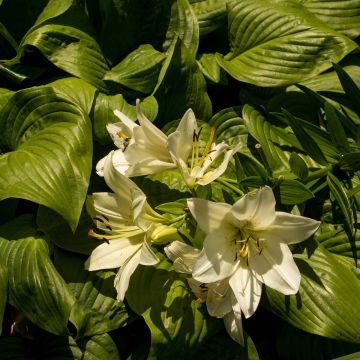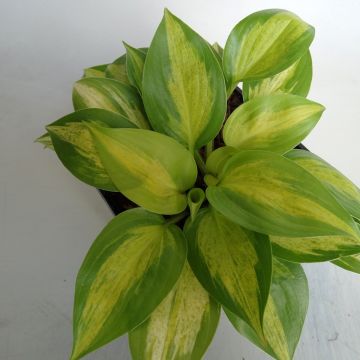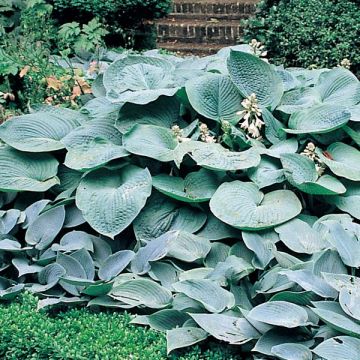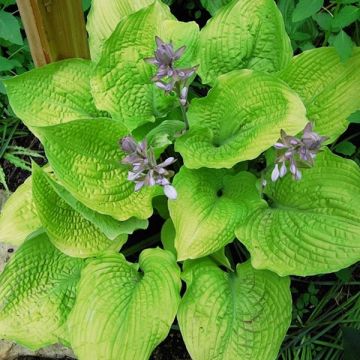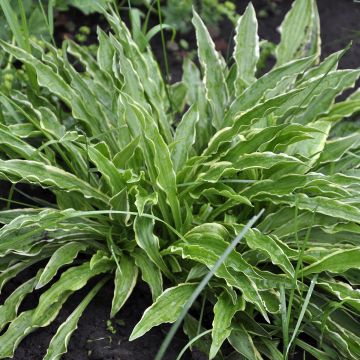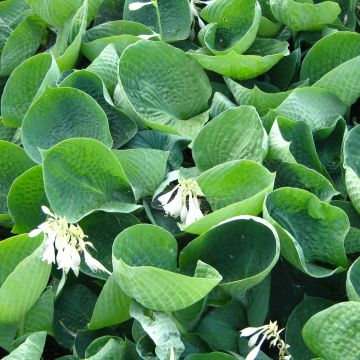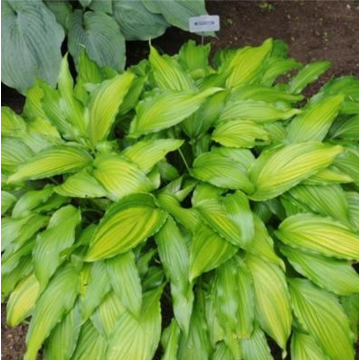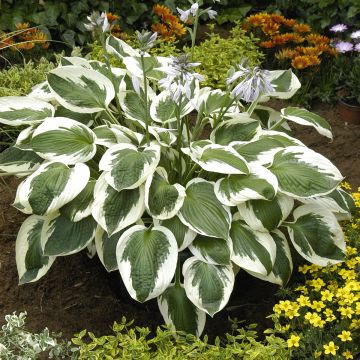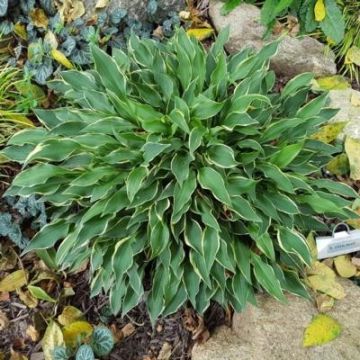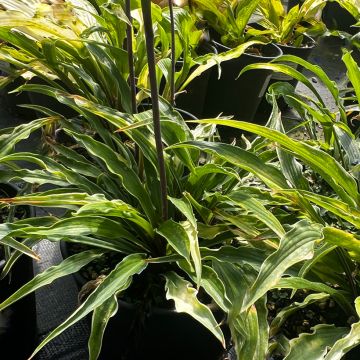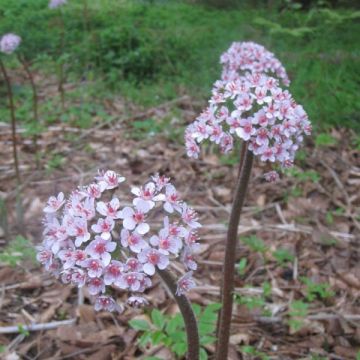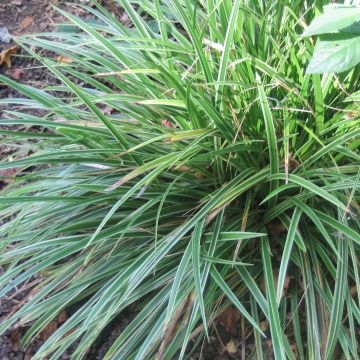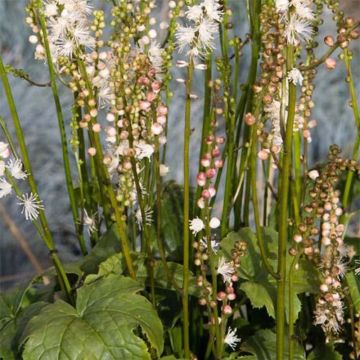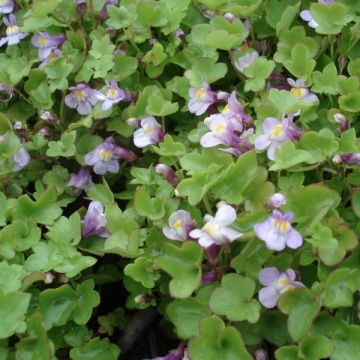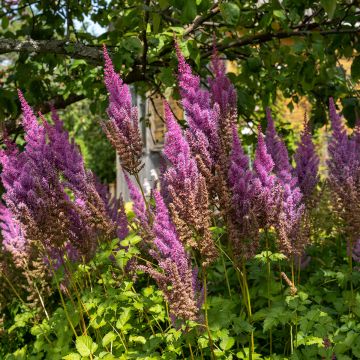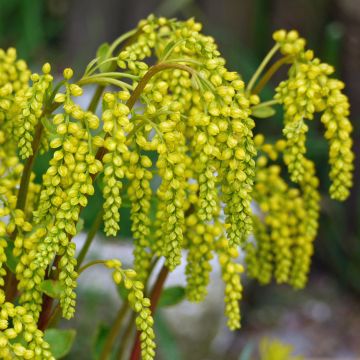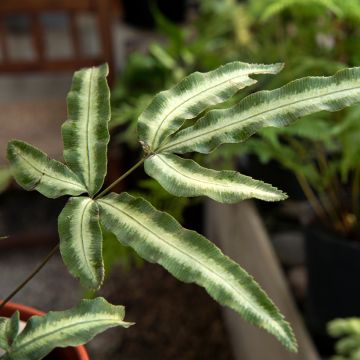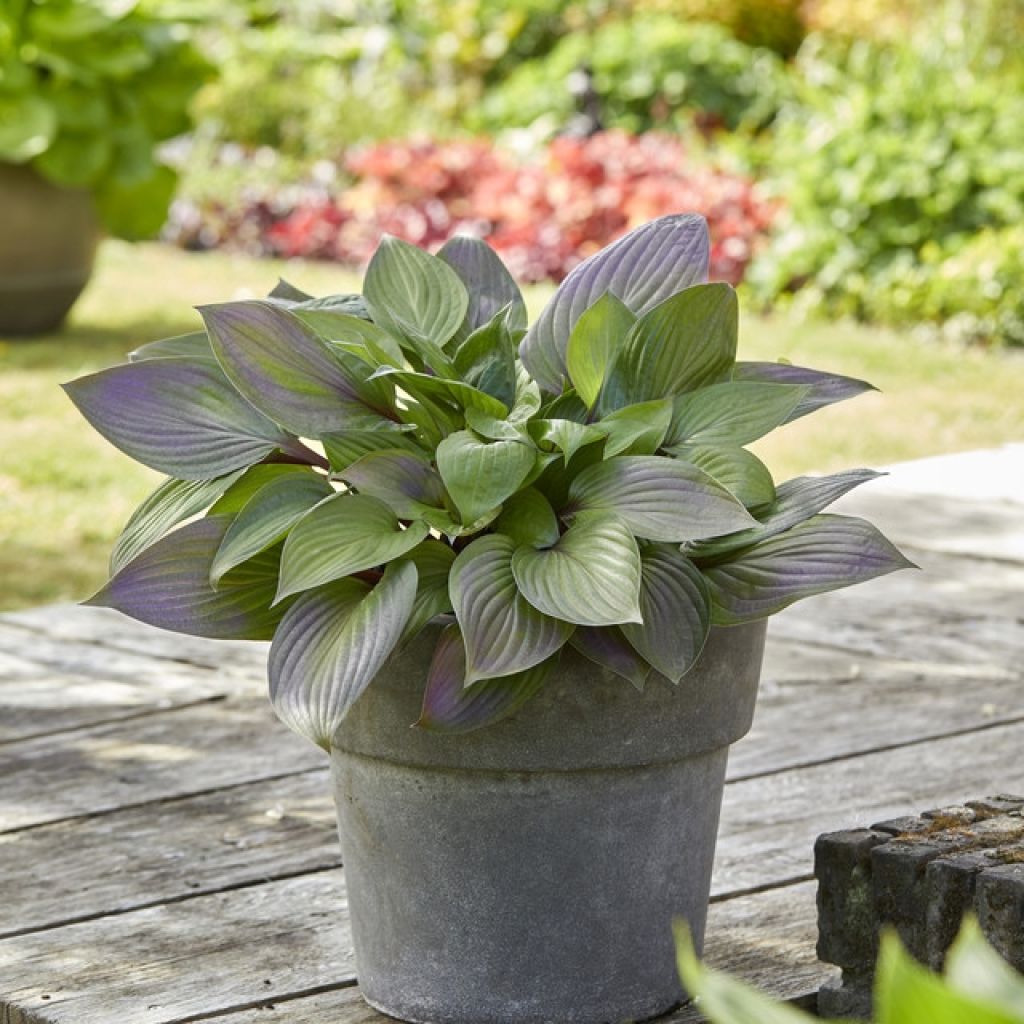

Hosta First Blush
Hosta First Blush
Hosta First Blush
Plantain Lily, Funkia
This item cannot be shipped to the selected country
Delivery charge from €5.90
Delivery charge from €5.90
More information
Schedule delivery date,
and select date in basket
This plant carries a 12 months recovery warranty
More information
We guarantee the quality of our plants for a full growing cycle, and will replace at our expense any plant that fails to recover under normal climatic and planting conditions.
From €5.90 for pickup delivery and €6.90 for home delivery
Express home delivery from €8.90.
From €5.90 for pickup delivery and €6.90 for home delivery
Express home delivery from €8.90.

Does this plant fit my garden?
Set up your Plantfit profile →
Description
The Hosta 'First Blush' is a variety that stands out with the red blush that adorns its spring leaves. Washed in red-violet on a green background, finely edged with the same red, they become green in summer, especially if the temperatures are high. The petioles that bear these leaves retain their dark red color throughout the season. The plant is adorned in late summer with a charming lavender mauve flowering. Perennial, hardy, and colorful, this medium-sized Hosta is perfect for ornamenting a shaded terrace or the darker areas of the garden.
Hostas belong to the Liliaceae family. Originating from Japan and China, there are no less than forty species and countless horticultural varieties appreciated for their foliage. The Hosta is a herbaceous and deciduous perennial plant that is easy to grow in ordinary soil, but preferably in shade. Its vegetation emerges from the ground in spring and disappears in winter.
This hosta 'First Blush', obtained in 2016 by Bob Solberg, is a descendant of the variety 'Beet Salad'. The plant develops basal rosettes of beautiful thick heart-shaped leaves with veining, measuring 15 cm (6in) in length. The plant reaches approximately 30 cm (12in) in height and 50-60 cm (20-24in) in width at maturity. The colour of the leaves varies from spring to summer: in spring, their green lamina "blushes" from tip to base, then green dominates in the middle of summer. The further north you go, the longer the red coloration persists on the foliage. Flowering occurs in late summer, usually in August-September. From the leaf clump emerge reddish-violet stems measuring 45 cm (18in) in height, bearing light violet flowers. Hostas are very long-lived plants that can live for many years in the garden.
The Hosta 'First Blush' is highly decorative in borders or as an edging, but also in pots. Combine it with other varieties, as well as with foamflowers and brunneras at the base of a large tree to create a sumptuous foliage display. It will also blend well with many perennials such as astilbes, Japanese ferns, epimediums, and purple bugbanes, with which it forms lovely duos that require little maintenance. Its foliage will hide the gaps left by spring-flowering bulbs. It will also thrive alongside lungworts or small violets. All hostas grow well in pots and can remain in the same container for several years. Choose a special geranium potting soil to be used during the growing season. As long as the foliage is not too dense, you can water the pot from above. Then place a saucer under the pot where you will pour the water, maintaining a constant level in summer.
Report an error about the product description
Hosta First Blush in pictures
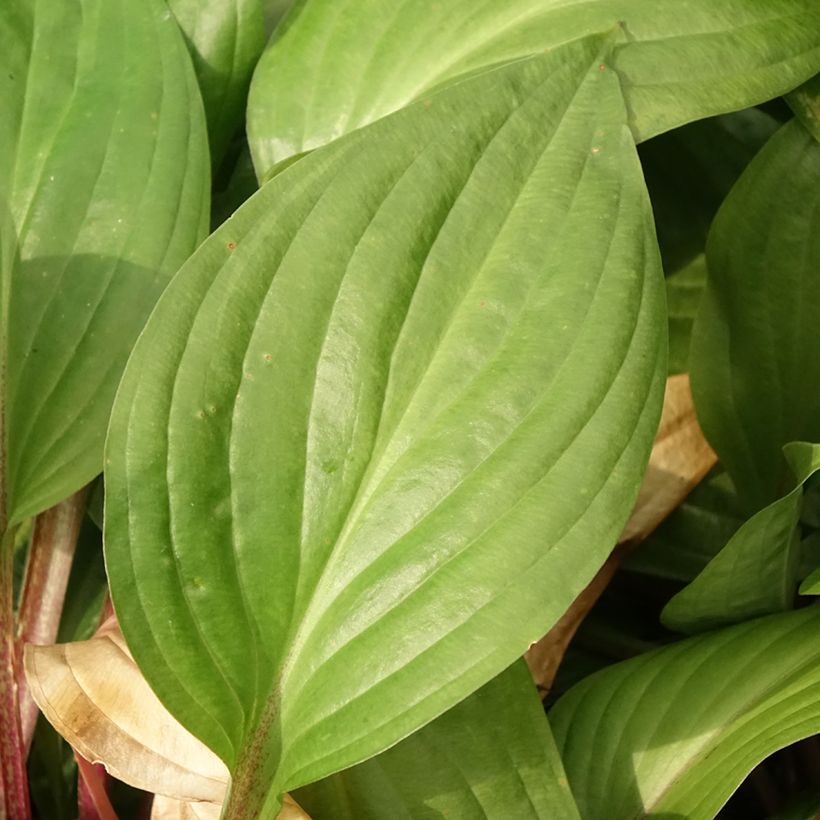

Flowering
Foliage
Plant habit
Botanical data
Hosta
First Blush
Liliaceae - Hostaceae
Plantain Lily, Funkia
Cultivar or hybrid
Other Hostas - Plantain Lilies
Planting and care
Hostas are planted in spring or autumn. Hostas prefer a deep, rich, humus-bearing, loose soil, preferably neutral to acidic (at least low in limestone), moist to wet throughout the year. Plant them in partial shade or dappled shade and in a sheltered location away from strong winds.
Prepare a planting hole of 20 cm (8in) x 20 cm (8in) x 20 cm (8in). If your soil is heavy, mix equal parts of compost with crumbled soil, partially backfill the hole, and place your potted plant so that the top of the root ball is covered with 3 cm (1in) of soil. Adding a slow-release fertiliser (dehydrated blood, horn powder) will nourish your plant during its rooting period without the risk of burning. Ensure that the collar is well above ground level. Firm the soil and water thoroughly to eliminate air pockets. If the weather is dry, you will need to water regularly for a few weeks to facilitate the establishment of your plant. Also, water regularly in case of a dry summer.
With their common preference for moist areas, slugs and snails never stay far from hostas. Even though blue or variegated hostas often have thicker and tougher foliage, which is less appetising to slugs, these plants still need protection from gastropods. Protect your Hostas by surrounding them with slug pellets containing ferramol (approved for Organic Agriculture), eggshells, coffee grounds, wood chips, or any dry and rough natural substance that repels them. Hedgehogs are gardeners' best allies in the fight against gastropods, as unlike chickens, they do not dig up soil and do not attack the fresh green shoots of young plants. Finally, some plants have a repulsive smell for slugs, such as wormwoods and garlic.
Planting period
Intended location
Care
-
, onOrder confirmed
Reply from on Promesse de fleurs
Shade-loving perennials
Haven't found what you were looking for?
Hardiness is the lowest winter temperature a plant can endure without suffering serious damage or even dying. However, hardiness is affected by location (a sheltered area, such as a patio), protection (winter cover) and soil type (hardiness is improved by well-drained soil).

Photo Sharing Terms & Conditions
In order to encourage gardeners to interact and share their experiences, Promesse de fleurs offers various media enabling content to be uploaded onto its Site - in particular via the ‘Photo sharing’ module.
The User agrees to refrain from:
- Posting any content that is illegal, prejudicial, insulting, racist, inciteful to hatred, revisionist, contrary to public decency, that infringes on privacy or on the privacy rights of third parties, in particular the publicity rights of persons and goods, intellectual property rights, or the right to privacy.
- Submitting content on behalf of a third party;
- Impersonate the identity of a third party and/or publish any personal information about a third party;
In general, the User undertakes to refrain from any unethical behaviour.
All Content (in particular text, comments, files, images, photos, videos, creative works, etc.), which may be subject to property or intellectual property rights, image or other private rights, shall remain the property of the User, subject to the limited rights granted by the terms of the licence granted by Promesse de fleurs as stated below. Users are at liberty to publish or not to publish such Content on the Site, notably via the ‘Photo Sharing’ facility, and accept that this Content shall be made public and freely accessible, notably on the Internet.
Users further acknowledge, undertake to have ,and guarantee that they hold all necessary rights and permissions to publish such material on the Site, in particular with regard to the legislation in force pertaining to any privacy, property, intellectual property, image, or contractual rights, or rights of any other nature. By publishing such Content on the Site, Users acknowledge accepting full liability as publishers of the Content within the meaning of the law, and grant Promesse de fleurs, free of charge, an inclusive, worldwide licence for the said Content for the entire duration of its publication, including all reproduction, representation, up/downloading, displaying, performing, transmission, and storage rights.
Users also grant permission for their name to be linked to the Content and accept that this link may not always be made available.
By engaging in posting material, Users consent to their Content becoming automatically accessible on the Internet, in particular on other sites and/or blogs and/or web pages of the Promesse de fleurs site, including in particular social pages and the Promesse de fleurs catalogue.
Users may secure the removal of entrusted content free of charge by issuing a simple request via our contact form.
The flowering period indicated on our website applies to countries and regions located in USDA zone 8 (France, the United Kingdom, Ireland, the Netherlands, etc.)
It will vary according to where you live:
- In zones 9 to 10 (Italy, Spain, Greece, etc.), flowering will occur about 2 to 4 weeks earlier.
- In zones 6 to 7 (Germany, Poland, Slovenia, and lower mountainous regions), flowering will be delayed by 2 to 3 weeks.
- In zone 5 (Central Europe, Scandinavia), blooming will be delayed by 3 to 5 weeks.
In temperate climates, pruning of spring-flowering shrubs (forsythia, spireas, etc.) should be done just after flowering.
Pruning of summer-flowering shrubs (Indian Lilac, Perovskia, etc.) can be done in winter or spring.
In cold regions as well as with frost-sensitive plants, avoid pruning too early when severe frosts may still occur.
The planting period indicated on our website applies to countries and regions located in USDA zone 8 (France, United Kingdom, Ireland, Netherlands).
It will vary according to where you live:
- In Mediterranean zones (Marseille, Madrid, Milan, etc.), autumn and winter are the best planting periods.
- In continental zones (Strasbourg, Munich, Vienna, etc.), delay planting by 2 to 3 weeks in spring and bring it forward by 2 to 4 weeks in autumn.
- In mountainous regions (the Alps, Pyrenees, Carpathians, etc.), it is best to plant in late spring (May-June) or late summer (August-September).
The harvesting period indicated on our website applies to countries and regions in USDA zone 8 (France, England, Ireland, the Netherlands).
In colder areas (Scandinavia, Poland, Austria...) fruit and vegetable harvests are likely to be delayed by 3-4 weeks.
In warmer areas (Italy, Spain, Greece, etc.), harvesting will probably take place earlier, depending on weather conditions.
The sowing periods indicated on our website apply to countries and regions within USDA Zone 8 (France, UK, Ireland, Netherlands).
In colder areas (Scandinavia, Poland, Austria...), delay any outdoor sowing by 3-4 weeks, or sow under glass.
In warmer climes (Italy, Spain, Greece, etc.), bring outdoor sowing forward by a few weeks.

































